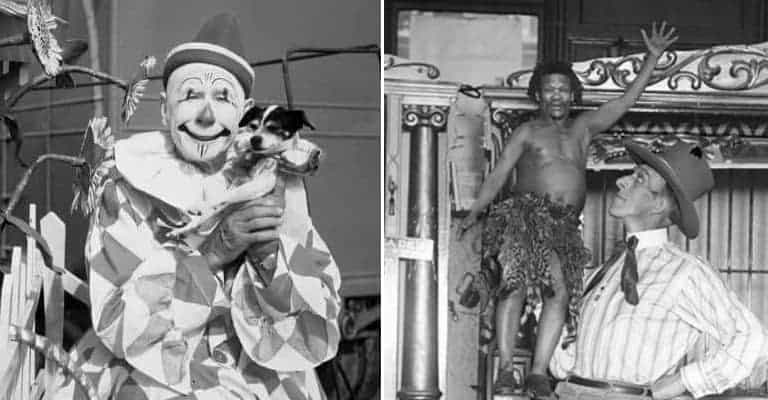The Big Top. Three rings of non-stop entertainment with trapeze artists, lion tamers, fire-eaters, acrobats, jugglers, knife throwers, and magicians. And of course, the clowns. Trained elephants and other exotic animals. A midway with shows promising sights never before seen by those who bought a ticket and went in to be entertained. The circus arrived in town by train, with gaudily painted and decorated cars carrying its performers and equipment. Watching the tents being erected using the power of the show’s elephants was part of the entertainment. For decades, one of the dreams of American children was to run away and join the circus.

There were many traveling circuses in the United States, but the greatest and most famous of them all was the combined Ringling Brothers Barnum and Bailey, which somewhat immodestly billed itself as The Greatest Show on Earth. From 1871 to 2017 the circus crisscrossed the country, though over time the tents erected on the outskirts of town were replaced with performances inside America’s indoor arenas and showplaces. When it finally succumbed to the combined effects of high operating costs, the protests of animal rights activists, and competition from other forms of entertainment, it had awed audiences for nearly a century and a half. Here is its story.
1. P. T. Barnum was America’s greatest showman in the mid-19th century

Several circuses were formed in the United States in its early years, with one operated by Hachalia Bailey as early as 1806, featuring trained pigs and a dog. An early employee would grow into one of the greatest showmen and hoax artists of American history, Phineas Taylor Barnum, known to posterity as P.T. Barnum. By the 1840s Barnum was running his American Museum in New York, featuring live animals in a zoo-like setting and what was then called a freak show, though what were then considered freaks can be seen today on almost any street in America – tattooed ladies, personages exhibiting multiple body piercings, etc. In the 1860s the museum burnt down. Twice.
Barnum allowed himself to join with a show which was a traveling competitor of his late museum, the Cooper and Bailey Circus, and the combined circus and museum took the cumbersome name P.T. Barnum’s Greatest Show On Earth, And The Great London Circus, Sanger’s Royal Menagerie and the Grand International Allied Shows United, though the organizations in the name other than his own were figment’s of his fertile imagination. Beginning in 1881 the show, which gradually shortened its name to Barnum and Bailey’s Circus, toured the United States by train after 1882 proudly touting the inclusion in their show of the world’s largest elephant, whose name, Jumbo, became an adjective for extremely large size in the American lexicon.

